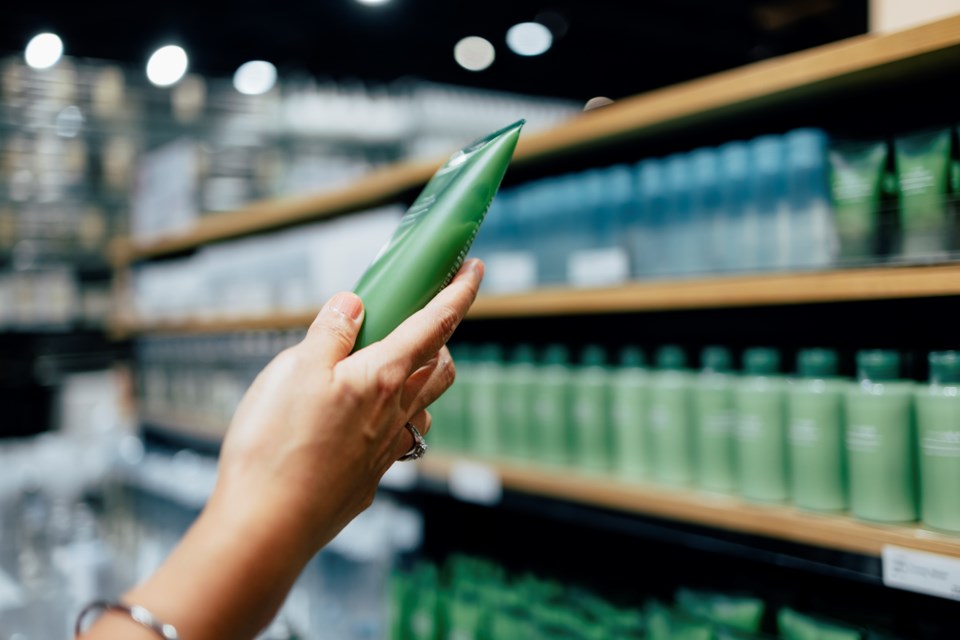I have focused so much on nutrition in my articles, pertaining to ‘we are what we eat’ but have been negligent in including articles on ‘we are what we wear.’
Clothing, cosmetics and personal health products all contain chemicals that can be absorbed through our skin into our bloodstream. Our skin is our biggest organ and because of its porous condition, it can be a gateway for many chemicals to get into our bodies.
I have been an avid nutritional label reader for my whole adult life, and I generally avoid many foods that contain additives that I deem unnecessary. Whole unprocessed foods have a much higher chance of being real food — the only food our bodies know how to process. While being diligent in what we consume, many of us have been rather negligent in paying attention to the ingredients of our hair and skin care products. Chemicals that don’t leave our system have the potential to build up to toxic levels that could make us sick with diseases like cancer, etc.
The International Nomenclature Cosmetic Ingredients is the international list of common ingredients and lists more than 16,000 ingredients used in cosmetic and personal care products. Please check the labels of your favourite products and note if any of the following chemicals are present.
Sodium lauryl sulfate are surfactants most often found in shampoo, body wash and bubble bath and can cause allergic reactions and skin irritation. It may also be contaminated with the carcinogen 1,4-dioxane. It may also show up on the label as SLS and SLES.
Parabens are used as preservatives in shampoo, body wash, face cleanser, lotion and foundation. They could disrupt our endocrine systems and alter hormones. They show up on labels as methyl, isobutyl or propyl-paraben.
Phthalates are chemicals used for texture or to get the substance to cling to your skin. They are found in synthetic fragrances and nail polish. These chemicals may cause hormone disruption and possibly birth defects. They show up on a label as DBP, DEHP, DEP…
Ethanolamines, also known as MEA, DEA or TEA, are surfactants that adjust pH in a product. They may cause skin toxicity, and hormone disruption, and have been known to exacerbate allergies. They may also affect fetal brain development.
Benzalkonium chloride is found in moisturizers and sunscreen as a preservative. It can cause respiratory issues, skin and eye irritation, allergies, etc.
Polyethylene glycol is used to thicken cosmetics and used as a solvent and moisture carrier. They can be found in sunscreen and shampoo. They could be contaminated with strong carcinogens ethylene oxide and 1,4-dioxane.
Butylated hydroxyanisole or hydroxytoulene is found in lipstick, moisturizers and diaper cream. They may damage the liver and are suspected of being potential carcinogens (cancer-causing) and hormone disruptors. On the label, they may also be listed as BHA or BHT.
Ethylenediaminetetraacetic acid, also known as EDTA, is a chelating agent and helps a product’s stability, found in many moisturizers. It can be toxic to organs.
Synthetic flavours and fragrances are used to scent almost all cosmetics and are known to cause allergies and potentially disrupt hormones. Ingredients of the fragrances used in products are often not listed, as they are proprietary.
Hydroquinone is found in scar-lessening creams and skin-lightening products. It can be toxic to organs, cause skin irritation and may be linked to cancer.
Triclosan or triclocarban are antimicrobial pesticides found in liquid soap, bars of soap and toothpaste. They are suspected of being harmful to reproductive systems and very toxic to marine life.
Formaldehyde is a toxic, known cancer-causing ingredient used often as a preservative in shampoo, body wash and bubble bath. In addition to being a carcinogen, it is a neurotoxin and can cause asthma and developmental toxicity. It doesn’t show up as formaldehyde on the packaging but could be listed as formalin, methylene glycol, formic aldehyde, paraform, formol, FYDE, formalith, methanal, methyl aldehyde, methylene oxide, tetraoxymethalene, oxomethane, or oxymethylene.
Formaldehyde is often disguised in cosmetics by using formaldehyde-releasing preservatives, which are ingredients that break down over time to release formaldehyde. They may be listed on the label as DMDM hydantoin, imidazolidinyl urea, diazolidinyl urea, sodium hydroxymethylglycinate, quaternium-15, bromo-2-nitropropane-1 and 3 diol (bronopol).
Again, I reiterate that what we put in our bodies (and on our bodies) affects our long-term health. A good start is to avoid the above-named harmful substances, choosing instead to use SLS-free shampoos and conditioners, natural soaps, non-aluminum deodorants, very basic face creams, or just olive oil, coconut butter, shea butter or cocoa butter, etc.
Please read the labels of the products you use on the outside of your body. If there are ingredients that you cannot pronounce then it may be better to choose a safer alternative from your local health food store, farmer’s market or stores that carry only natural products. There are usually people in every community hand-making safe and excellent quality soaps, creams, lotions and potions.
To your healthy beauty.
Claire Nielsen is a health coach, author, public speaker and founder of www.elixirforlife.ca. The information provided in the above article is for educational purposes only and is not a substitute for professional health and medical advice. Please consult a doctor, health-care provider or mental health practitioner if you're seeking medical advice, diagnoses and/or treatment.



